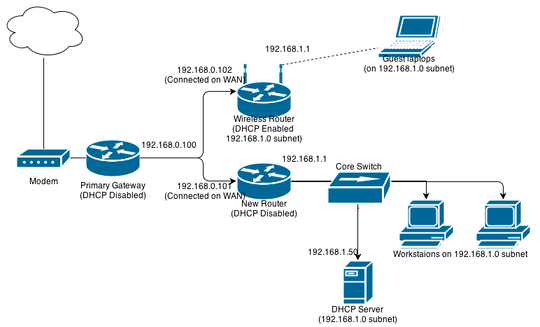I'm assuming your wireless router is a sub-$100 one you'd buy at a department store.
You really need a router with 3 interfaces. A PC running Linux with 3 network cards does this nicely - one NIC is the WAN, the other NIC is connected to your LAN hosts, and the third your wireless router is plugged into. You can then run a DHCP on the Linux box listening and giving out IPs on the LAN and WLAN interface.
You're in for a bit of iptables configuration in order to make sure the WLAN hosts can't talk to the LAN hosts (relatively simple since they are on separate subnets).
You could also put the LAN hosts behind their own router, and configure any SPI firewall settings on the wireless and wired router to drop traffic from the other subnet. Note that in this situation you'll need a separate DHCP server running on each subnet since broadcast traffic isn't forwarded by routers.
You could also, if the wireless router supports it, tell it to block all outgoing traffic originating from behind it to the subnet that your wired LAN is on.



What are the make/models of the default gateway router and the core switch? This can be straightforward provided they both support VLANs. – Paul – 2013-03-22T02:03:47.627
A little more information on what you're currently running is needed. Is this a home network (I assume not) or a business/work network? What model of wireless controller/router do you have? etc.. – Josh – 2013-03-22T02:49:55.607
It's actually a non-profit organization. I don't have the models of the routers with me right now- but it's all residential-grade equipment. I don't think VLANs are an option this time. – Austin ''Danger'' Powers – 2013-03-22T03:09:08.813